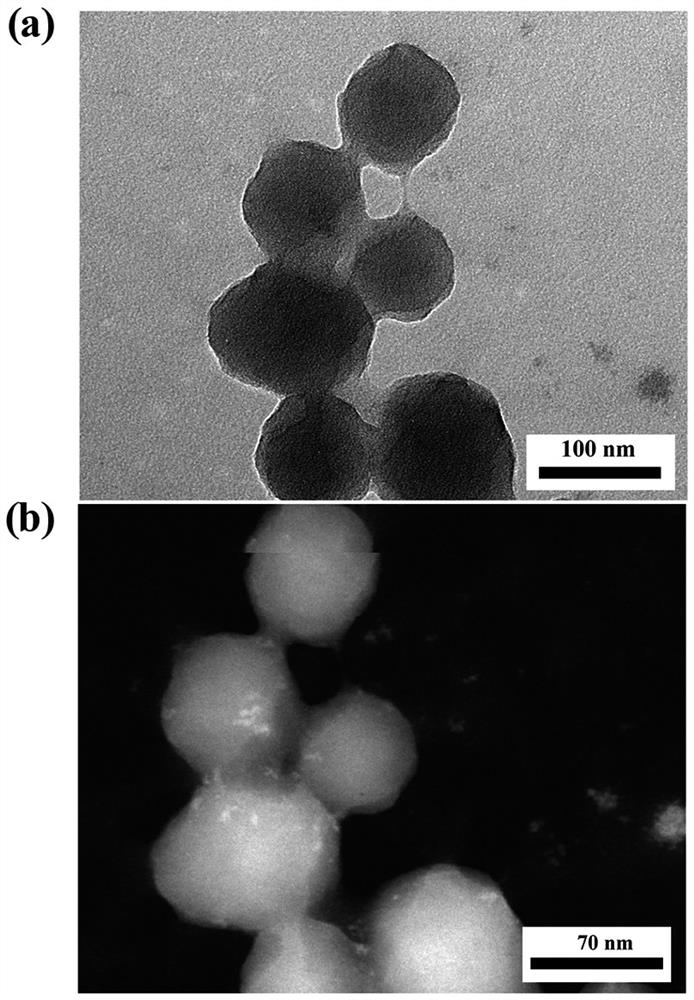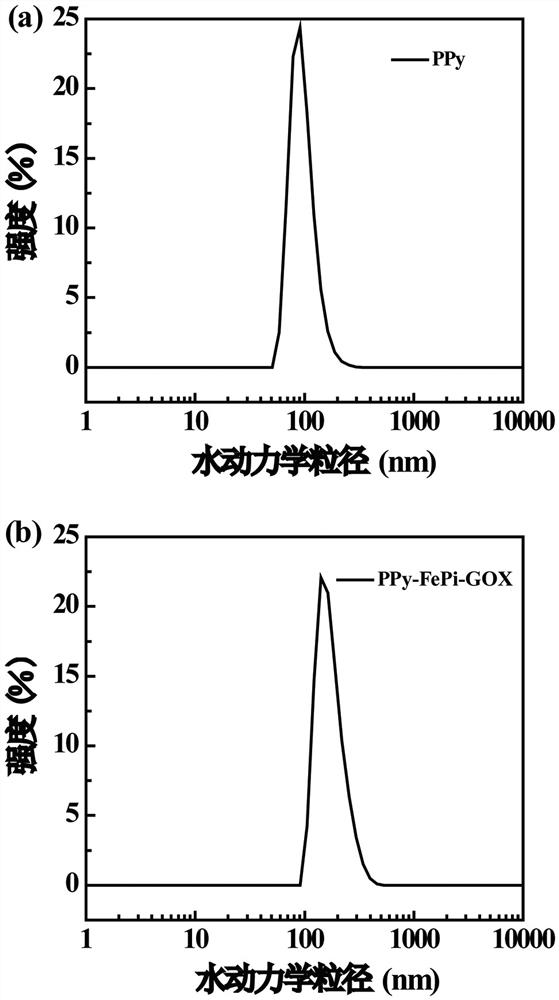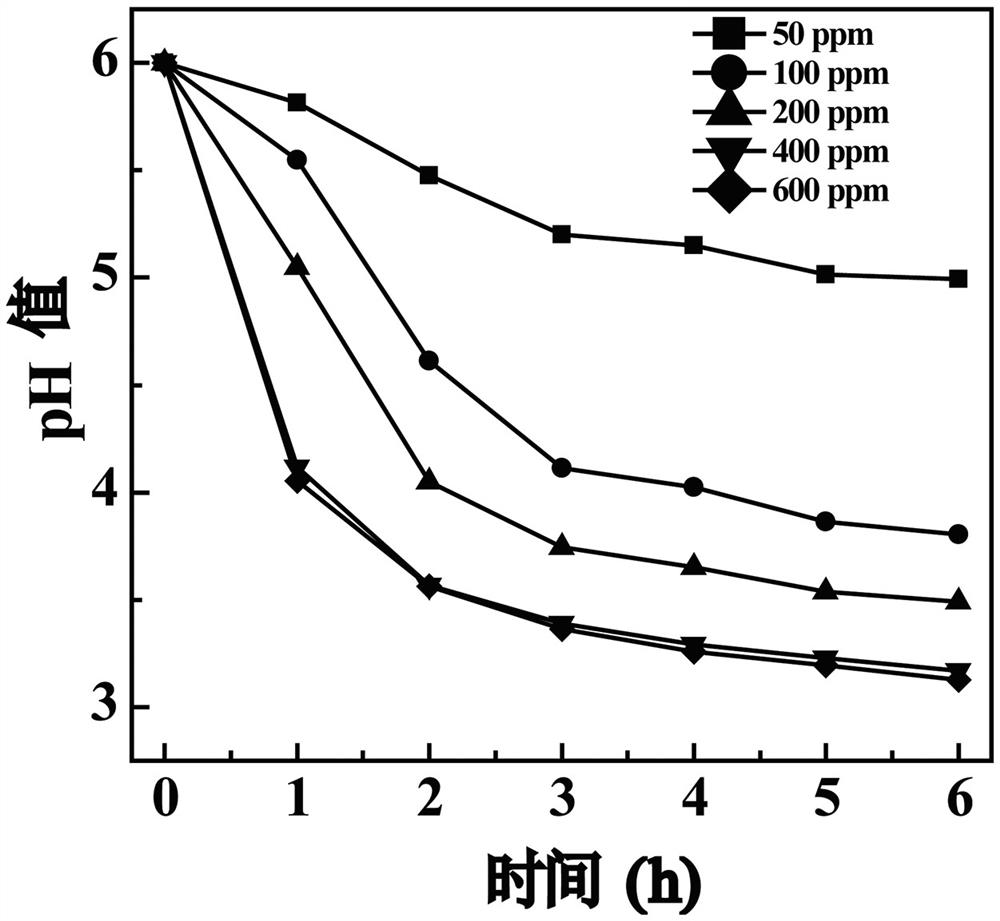Preparation based on polypyrrole-iron phosphate-oxidase nanoparticles and applications
A nanoparticle and polypyrrole technology, which is applied in the direction of oxidoreductase, immobilized enzyme, biochemical equipment and methods, etc., can solve the problems of no research reports on polypyrrole-iron phosphate-oxidase composite nanoparticles, etc., and achieve good results Effects of in vitro performance, simple preparation process, and easy operation
- Summary
- Abstract
- Description
- Claims
- Application Information
AI Technical Summary
Problems solved by technology
Method used
Image
Examples
Embodiment 1
[0032] Dissolve 241.0 mg of poly(vinyl alcohol) (PVA) in 6.025 mL of water, heat and stir it magnetically for 10 min to mix well, and cool for 10 min. Join FeCl 3 ·6H 2 O (90.2 mg / mL) 13.919 mL was stirred and reacted for 1 h. Under ice bath conditions, 139.5μL of pyrrole monomer was added, and oxidative polymerization was carried out for 4 h. The polypyrrole nanoparticles obtained after centrifugal purification were stored at 4°C for later use.
[0033] The TEM image shows the size and morphology of the polypyrrole nanoparticles. Refer to the instructions attached figure 1 . The TEM image shows that the polypyrrole nanoparticles were dispersed in phosphate buffer to grow iron phosphate and then loaded with glucose oxidase ( figure 1 a. figure 1 b) It can be seen that small spheres grow on the big spheres, indicating that the iron phosphate has successfully grown on the polypyrrole nanoparticles.
Embodiment 2
[0035] Take 40.0 mg of Polypyrrole (PPy), dissolve it in 31 mL of ultrapure water, add 4.0 mL of phosphate buffer (0.1mol / L), shake with a shaker for 4 hours, and mix well. After the reaction, 2 mL (10 mg / mL) of glucose oxidase solution was directly added to the resulting solution, and the polypyrrole-iron phosphate-glucose oxidase (PPy-FePi-GOX) nanoparticles were obtained after centrifugal purification, and stored at 4°C.
[0036] The laser particle size analyzer (DLS) test results show the hydrodynamic size and uniformity of the obtained composite nanoparticles. Refer to the instructions attached figure 2 . figure 2 a shows that the average size of PPy nanoparticles is 168.4 ± 8.7 nm, and the monodispersity is 0.203 ± 0.042. figure 2 b shows that the average size of PPy-FePi-GOX composite nanoparticles is 232.1 ± 21.8 nm, and the monodispersity is 0.232 ± 0.014.
Embodiment 3
[0038] Take 0.5 mL (3 mg / mL) of PPy-FePi-GOX nanoparticles prepared in Example 2, and set the final reaction concentration of glucose to 50, 100, 200, 400, and 600 ppm, respectively. Use a pH meter to test the acid strength generated during the reaction, and set the time to 0, 0.5, 1, 2, 3, 4, 5, 6 h. The test result is like image 3 It is shown that GOX consumes glucose to produce gluconic acid during this reaction. The pH of the solution decreases with the prolongation of the reaction time and is positively correlated with the glucose concentration.
PUM
| Property | Measurement | Unit |
|---|---|---|
| size | aaaaa | aaaaa |
| size | aaaaa | aaaaa |
Abstract
Description
Claims
Application Information
 Login to View More
Login to View More - R&D
- Intellectual Property
- Life Sciences
- Materials
- Tech Scout
- Unparalleled Data Quality
- Higher Quality Content
- 60% Fewer Hallucinations
Browse by: Latest US Patents, China's latest patents, Technical Efficacy Thesaurus, Application Domain, Technology Topic, Popular Technical Reports.
© 2025 PatSnap. All rights reserved.Legal|Privacy policy|Modern Slavery Act Transparency Statement|Sitemap|About US| Contact US: help@patsnap.com



